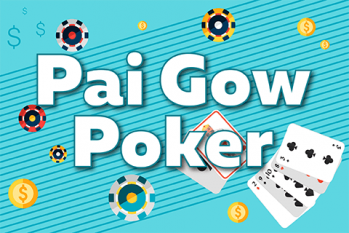 Pai Gow poker comes from an ancient Chinese game called Pai Gow, which means make-nine in Chinese. It was a game which was played hundreds of years ago with tiles (dominoes) and a dice. The ranking of the domino pieces was very complicated and the main goal of each player was to create and collect more combinations which are close to nine than the opponents gather pieces of dominos.
Pai Gow poker comes from an ancient Chinese game called Pai Gow, which means make-nine in Chinese. It was a game which was played hundreds of years ago with tiles (dominoes) and a dice. The ranking of the domino pieces was very complicated and the main goal of each player was to create and collect more combinations which are close to nine than the opponents gather pieces of dominos.
In Pai Gow poker, the participating players can be up to 6 and they are playing against the dealer, just like in blackjack. The ancient Chinese pai gow game was brought to North America in the middle of 19th century by Chinese emigrants who were going to the United States in a search and hope for a better life.
Over the time, this domino game integrated with a card game and became what it is nowadays popular as Pai Gow poker. This type of poker made a very interesting evolving process from domino game to card game which makes it unique and many casino players like it very much.
The owner of the Bell Card Club in Los Angeles, Sam Torosian, invented the game of Pai Gow Poker in 1985. An elderly Filipino customer told him about the game Pusoy which was the birth of the idea for Pai Gow poker. He figured that the 13 card game with players arranging 3 hands would be too slow, but a simplified 2 hand version with only 7 cards would be faster and easier for players to learn.
The game quickly became popular and by the late 1980s was being played on the Las Vegas strip, and eventually worldwide. Torosian famously failed to patent the game he invented. Being given a bad advice by an attorney he consulted, and also conferring the noted poker author Mike Caro, Torosian was shown that the game was not patentable.


 Pai Gow poker comes from an ancient Chinese game called Pai Gow, which means make-nine in Chinese. It was a game which was played hundreds of years ago with tiles (dominoes) and a dice. The ranking of the domino pieces was very complicated and the main goal of each player was to create and collect more combinations which are close to nine than the opponents gather pieces of dominos.
Pai Gow poker comes from an ancient Chinese game called Pai Gow, which means make-nine in Chinese. It was a game which was played hundreds of years ago with tiles (dominoes) and a dice. The ranking of the domino pieces was very complicated and the main goal of each player was to create and collect more combinations which are close to nine than the opponents gather pieces of dominos.